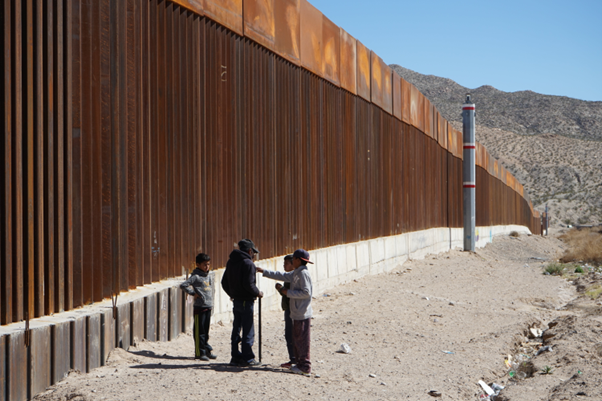The Folly of Fences
Creation Care Officer Marcus Zipperlen explains how closed borders harm more than just human migrants.
When the Berlin wall came down in 1989 it felt such a significant step in the right direction, presaging the reconciliation of neighbours and the freedom to move and live. Yet since then border walls in Europe have grown to six times the length standing now at just over 2000km. Around the world there are some 47,000km of hard borders between countries. This must be a sadness for Christians following a Lord whose desire to love tolerated no restraint by political or social boundaries.

The US/Mexico border wall
Aside from the human misery caused to displaced people prevented from finding sanctuary, there is a huge ecological cost to these impenetrable barriers. Animals need to move to find food, water and partners who aren’t cousins. Cut off from these opportunities, populations dwindle as we are witnessing.
The barrier between India and Pakistan, for example, is seriously reducing the population of its wild goats; the wall between China and Mongolia is hurting populations of wild asses, amongst other animals; and the USA/Mexico wall is reducing all land mammals as well as pygmy owls, who fly low to the ground. Climate change is making the problem even worse because as our Earth warms animals need to migrate to live within their natural temperature range and border walls trap them in increasingly unsuitable places.
What’s to be done? Well, politically we can demand of our representatives genuine solutions to our problems and not the scapegoating of foreigners. Walls don’t really work anyway, as the Slovenian government recently admitted of its expensive new border fence with Croatia, installed to deter refugees. This summer, it sent in the troops to tear it down, much to the benefit of Eurasian wolves, brown bears, and lynx that depend upon movement around in the Dinaric Mountains.
Closer to home we can break down barriers to the movement of wildlife within our own country. With a little care our churchyards and gardens can become stepping stones of connectivity counteracting the barriers presented by roads and towns: introduce some flowers to encourage pollinating insects, leave some wild spots for hedgehogs, or create a pond for amphibians. But, more relevant to our topic today, why not replace ugly fences with a mixed hedge of native species like Hawthorn, Holly, Beech, and Field Maple? They are much easier on the eye, allow animals to move through, and maybe even take up residence. Check out this page on the Wildlife Trusts website for some tips: https://www.wildlifetrusts.org/actions/how-make-hedge-wildlife